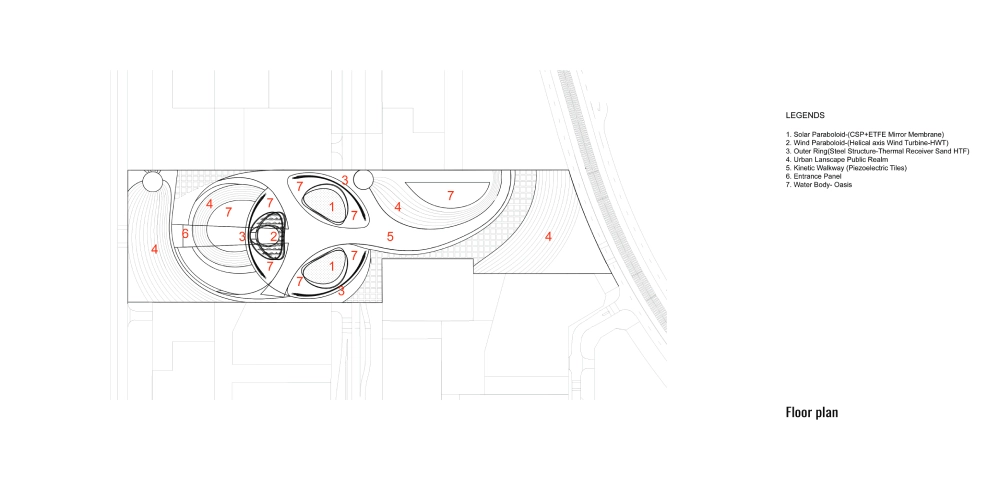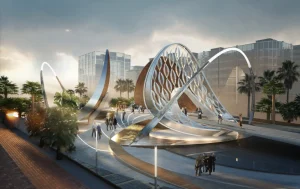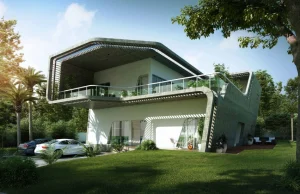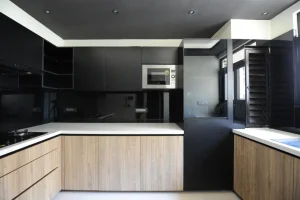





DESERT TRINITY
Renewable Oasis

LOCATION
Masdar, UAE
SKILLS
Architecture, Concept, Competition
TYPE
Renewable Land Art
AREA
2,906,25 sq.ft (27,000 sqm)
CLIENT
Masdar City & World Energy Council & Land Art generator Initiative
Desert Trinity represents the three parabolic elements of this project; two solar elements and one wind element that works synergistically to provide a clean and sustainable source of energy. Envisioned as the public realm of the future, the two concentrated solar paraboloids (solar elements) harness solar energy and the one paraboloid (wind element) comprised of helical shaped vertical axis wind turbines (HWT) harness wind energy. The elements have a diameter of 35m each. The concentrated solar elements harvest sunlight to make thermal energy from a strategically designed curved mirror surface onto a focused collector. The weight of the parabolic structure is supported by a concrete pylon in the shape of a hand, which is a representation of the hand of Gaia, the Goddess of the Earth in Greek Mythology. The Proposed cultural landmark for the city of Masdar aims to bring awareness on the opportunities of large-scale energy generation potential with minimum environmental impact that is harmonious with preserving nature’s beauty and hopes to serve as an example to future generations on sustainable coexistence.
The geographic location of Masdar has high annual solar irradiance (0.265 KW/sqm) with an average annual sunlight of 10 hours per day making concentrated solar power an attractive solution. Optimum orientations have been considered (South from East to West) when placing the solar parabolas on the site (300m x 90m) to capture the maximum solar power. Considering the availability of sand in the region we propose fluidised sand as the Heat Transfer Fluid (HTF). The wind parabola consisting of HWT’s has been oriented towards North West, to take advantage of the prevailing winds that blow with an average wind speed of 5.4 m/s.The wind element holds 53 small vertical axis Helical Wind Turbines (HWT) within it, which has a paraboloidal configuration.. Balancing solar with wind power eliminates the intermittency issues and combining the two technologies reduces overall delivered power cost. The solar elements are relatively low maintenance because it uses simpler light weight technology and is a passive system that has no moving parts. The primary materials used are ETFE, mirror film, steel, PET base film, local sand and concrete.
Desert Trinity showcases that the transition from an exclusive energy generation system to an enhanced convergence of renewable energy technologies which bypasses the environmental snags of both systems results in a better economic utilization of nature’s environmental processes. An approximate estimate of 2,388 MWh/year electricity is generated through the solar and wind elements. The amount of electricity consumed by a typical house in Masdar is 10 MWh/year . Hence, the net energy produced annually can supply peak load demand to more than 238 homes in the UAE. As a step further, the pedestrian bridge that unifies the Trinity (three elements) is composed of low carbon concrete with piezoelectric tiles, enabling visitors to contribute towards the generation of energy during their visit to the power plant of the future!



